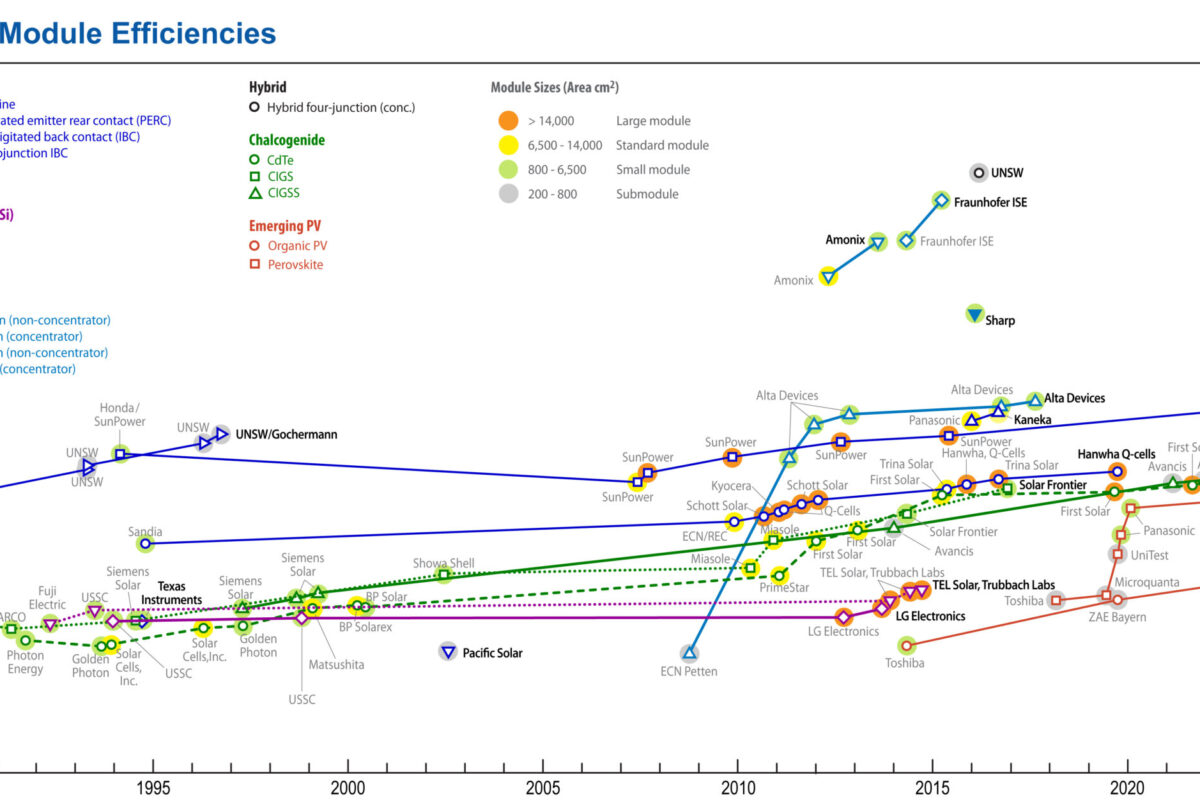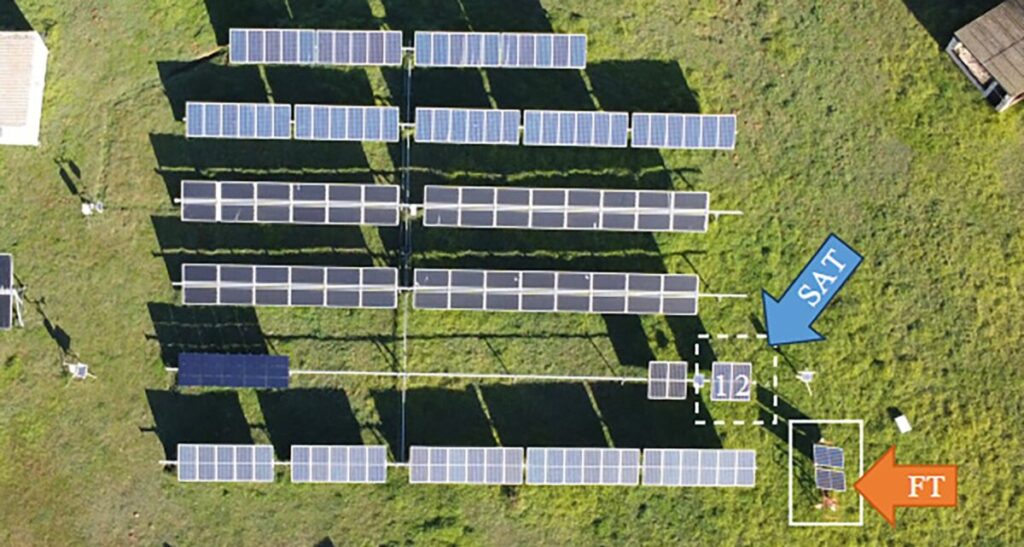Scientists spent months measuring two fixed panels and two single-axis modules to determine their site-specific heat dissipation factors. These local results indicate a 3.3% improvement in energy production compared to the standard factors used in PVSyst.
Researchers from South Africa’s Stellenbosch University have conducted a long-term experiment to study the heat dissipation factors in fixed-tilt (FT) and single-axis tracked (SAT) PV modules.
“The novelty of our research lies in the development of heat dissipation factors for SAT open-rack PV systems,” said corresponding author Dr. Hannes Pretorius. pv magazine. “While previous studies have quantified heat dissipation factors for FT, this is, to our knowledge, the first study to provide heat dissipation values specifically for SAT systems.”
The researchers focused on the constant heat dissipation factor (U0) and the wind-dependent heat dissipation factor (U1), which uses the popular Faiman model to calculate the module temperature. U0 and U1 depend on factors such as the irradiance of the plane-of-array (POA), the wind speed and the direction of the model.
“The Faiman model is widely accepted as a basis for calculating module temperatures. The commercial software PVSyst, for example, uses it. The user must enter specific heat dissipation factors based on the module configuration, after which the software calculates the annual power based on the annualized meteorological data at the site,” the group said. “It is also worth noting that PVsyst uses standard (unaccented) heat dissipation factors of U0= 29 W/m2K and U1= 0 Ws/m3K for any open rack installation. The value is actually inflated to take into account the contribution of wind, due to the potential unreliability of location-specific wind data.”
The researchers analyzed the actual U0 and U1 factors based on measurements from four panels outside Stellenbosch, South Africa. They were all polycrystalline modules of 420 W, of which two were FT and two were SAT. The SAT modules were in landscape orientation, with east-west tracking, while the FT had a fixed tilt angle of 31 degrees and a portrait orientation.
Measurements were taken over a four-month period in 2023, although only 44 days met the criteria of clear skies and were therefore used. Thermocouples were used to measure module and ambient temperatures, and pyranometers tracked POA, while other sensors recorded wind speed and direction and the tilt angle of the SATs. All data were filtered by the time frame between 10:00 AM and 2:00 PM to reduce noise.
Image: Stellenbosch University, working on solar photovoltaics, CC BY 4.0
“The results of the FT experiments compare favorably with the results from the literature, producing U0 = 25.7 W/m2K and U1 = 9.8 Ws/m3K based on the linear data regression analysis for the heat dissipation factors,” said the scientists. “Experiments with SAT modules extract heat dissipation factors of U 0 = 29.9 W/m2K and U 1 = 9.7 Ws/m3K, which represents a new contribution in the field. These values indicate that SAT modules experience improved heat dissipation with no/little wind compared to FT modules.”
When the site-specific U0 and U1 measurements are used to calculate the predicted annual power production, the results show an improvement of 2.9% and 3.3% for the FT and SAT configurations, respectively, compared to the standard heat dissipation factors of PVsyst of U0= 29 W/m2K and U1= 0 Ws/m3K.
“These findings are important, especially in the context of increasing competition in tenders for the construction of modern PV power plants and the increased importance of accurate techno-economic calculations,” the team said. “An exploration of selected days and average data over the test period reveals a clear relationship between module temperature, POA irradiation and wind speed. Evaluations confirm clearly lower module temperatures due to increased heat dissipation of SAT modules compared to FT modules… Interestingly, wind direction plays a secondary but not insignificant role in the heat dissipation of FT modules, while heat dissipation of SAT modules appears to be insensitive for wind direction.”
Pretorius added that the “most surprising result” was the significantly more stable heat dissipation of SAT modules compared to FT modules. Although SAT modules change angles throughout the day, the more consistent irradiation on their surfaces makes these systems much less sensitive to daily fluctuations in environmental conditions.
The scientists presented their results in “Understanding the Heat Dissipation Factors for Fixed Tilt Photovoltaic Modules and Single Axis Tracked Open Rack Photovoltaic Modules: Experimental Insights”, which was recently published in progress in the field of photovoltaic energy.
This content is copyrighted and may not be reused. If you would like to collaborate with us and reuse some of our content, please contact: editors@pv-magazine.com.
Popular content


